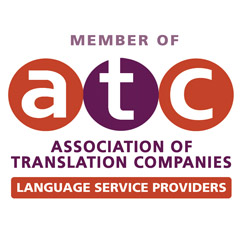In today’s interconnected world translation plays a crucial role in bridging linguistic gaps. With the rapid advancements in artificial intelligence (AI), the landscape of translation is undergoing a profound transformation. Despite the remarkable capabilities of AI in language processing, the human touch remains indispensable in ensuring accuracy, nuance, and sensitivity.
The Role of AI in Translation
Advancements in machine translation technology have revolutionized the way we approach language barriers. AI-powered translation tools utilize complex algorithms and neural networks to analyze and translate text with remarkable speed and accuracy. From simple phrases to complex documents, Artificial Intelligence can handle a wide range of translation tasks, making communication across languages more accessible than ever before.
Benefits of AI in Translation
One of the primary benefits of AI in translation is its ability to process vast amounts of data quickly. Unlike human translators, AI systems can work tirelessly around the clock, translating texts in a fraction of the time. This efficiency is particularly valuable in scenarios where speed is crucial, such as in the translation of news or posts.
Moreover, AI translation tools offer consistency in language use, ensuring uniformity across translated content. This consistency is especially important for businesses operating in multiple markets, as it helps maintain brand voice and messaging coherence across languages.
Limitations and Challenges
Despite its impressive capabilities, AI still faces several limitations in translation. One of the most significant challenges is context comprehension. While AI excels at translating individual words and phrases, it often struggles with understanding the broader context of a sentence or text, leading to inaccuracies or mistranslations.
Additionally, AI may overlook cultural nuances and idiomatic expressions that are inherent to human language. This lack of cultural sensitivity can result in translations that feel unnatural or inappropriate, particularly in marketing or creative content where tone and style are crucial.
Human Touch in Translation
While Artificial Intelligence continues to push the boundaries of translation technology, the human element remains irreplaceable in many aspects of the translation process. Human translators bring a depth of understanding and cultural insight that AI alone cannot replicate.
Why Human Translators Are Still Essential
Human translators possess a nuanced understanding of language that goes beyond mere word-for-word translation. They can interpret subtle nuances, idiomatic expressions, and cultural references, ensuring that the translated text accurately conveys the intended meaning.
Moreover, human translators provide a level of quality control that Artificial Intelligence systems often lack. They can identify and correct errors, inconsistencies, and mistranslations, ensuring that the final product meets the highest standards of accuracy and professionalism.
Nuances and Cultural Sensitivities
Language is deeply intertwined with culture, and translations must navigate the complexities of cultural differences delicately. Human translators are uniquely equipped to handle these nuances, drawing on their cultural background and expertise to produce translations that resonate with the target audience.
Whether it’s adapting marketing slogans for different cultural contexts or translating literature with cultural references, human translators play a vital role in preserving the authenticity and integrity of the original content.
The Synergy Between Artificial Intelligence and Human Translators
Rather than viewing AI as a replacement for human translators, the future of translation lies in harnessing the synergy between man and machine. Hybrid approaches that combine the strengths of AI technology with human expertise offer the most promising path forward.
Leveraging Technology for Efficiency Without Compromising Quality
By integrating AI, human translators can streamline repetitive tasks and focus on tasks that require human judgment and creativity. AI-powered tools can assist with some tasks, freeing up human translators to focus on higher-value activities.
Moreover, AI can learn from human feedback and improve its translation capabilities over time, leading to continuous refinement and enhancement of translation quality.
Enhancing Artificial Intelligence Algorithms Through Human Feedback
Human feedback is invaluable in refining AI algorithms and improving their performance. By providing feedback on translation outputs, human translators can help AI systems learn from their mistakes and adapt to specific language nuances and preferences.
Training and Upskilling Translators in Artificial Intelligence Tools
As AI becomes increasingly integrated into translation workflows, it’s essential for translators to acquire the necessary skills to leverage these tools effectively. Training programs and professional development initiatives can help translators master Artificial Intelligence technologies and stay abreast of the latest advancements in the field.
Future Trends in Translation
Looking ahead, the future of translation is ripe with possibilities. As AI technology continues to evolve, we can expect to see several trends shaping the translation landscape.
Continuous Evolution of AI Technology
AI-powered translation technology will continue to advance, with improved algorithms, enhanced language models, and better context comprehension capabilities. These advancements will further blur the lines between human and machine translation, offering new opportunities for collaboration and innovation.
Integrating AI into Translation Workflows
AI will increasingly become an integral part of translation workflows, automating routine tasks and augmenting human capabilities. Translation agencies and language service providers will leverage Artificial Intelligence to improve efficiency, reduce costs, and deliver higher-quality translations to their clients.
The Growing Demand for Multilingual Content
In an increasingly globalized world, the demand for multilingual content will continue to rise. Businesses, governments, and organizations will seek to communicate effectively with diverse audiences. This drives the need for translation services across various industries and sectors.
Conclusion
The future of translation lies at the intersection of AI and human collaboration. While AI has revolutionized the translation process, human translators remain essential for preserving linguistic and cultural nuances. By embracing hybrid approaches that leverage the strengths of both Artificial Intelligence and human expertise, we can unlock new possibilities and overcome the challenges of translation in the digital age.
Discover more on www.traductoresabc.com




